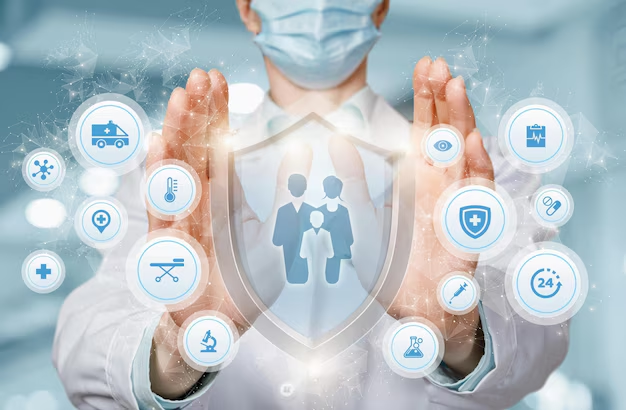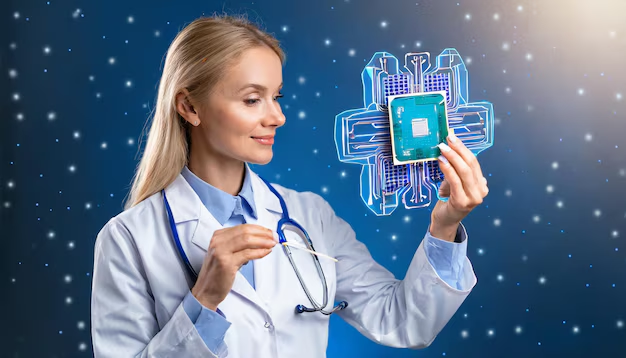In recent years, robotics in healthcare has evolved from a futuristic concept to a practical, life-changing reality. With the integration of robotic technology and artificial intelligence (AI), the healthcare industry is experiencing significant improvements in patient care, surgical precision, and operational efficiency. From robotic-assisted surgeries to robotic rehabilitation, robotics in healthcare is reshaping the way medical professionals deliver treatment. This article explores the key benefits of robotics in healthcare and how they are enhancing both patient outcomes and healthcare provider efficiency.
1. Improved Surgical Precision
One of the most significant contributions of robotics in healthcare is enhanced surgical precision. Robotic-assisted surgeries, such as those performed using the da Vinci Surgical System, allow surgeons to perform delicate procedures with greater accuracy than traditional methods.
- Smaller Incisions: Robotic tools enable surgeons to make smaller incisions, which results in less trauma to the body.
- Minimized Human Error: Robots assist surgeons by minimizing human errors during complex surgeries, leading to improved patient outcomes.
- Enhanced Visualization: Robotic systems provide surgeons with high-definition, 3D visualization, allowing for more precise navigation during procedures.
These advancements contribute to faster recovery times, reduced risk of infection, and better overall surgical outcomes.
2. Reduced Recovery Times and Shorter Hospital Stays
Robotics has played a crucial role in reducing recovery times for patients. With minimally invasive robotic surgeries, patients experience less pain, smaller scars, and reduced trauma, which significantly cuts down on recovery periods.
- Quicker Return to Normal Activities: Due to the precision of robotic surgeries, patients often experience quicker healing and are able to return to their normal activities faster.
- Shorter Hospital Stays: With less invasive procedures, patients can be discharged from the hospital sooner, reducing the burden on healthcare facilities and allowing for better resource management.
3. Enhanced Patient Safety

Robotic systems are equipped with advanced features that improve patient safety during surgeries and other medical procedures.
- Real-Time Monitoring: Robots can monitor a patient’s vitals during surgery and alert medical staff to any irregularities, reducing the chance of complications.
- Steady Hands: Unlike human hands, robotic arms do not tire, which ensures a steady, consistent approach throughout complex procedures.
- Precision in High-Risk Surgeries: For high-risk surgeries, robotic tools provide a more controlled environment, reducing the risk of surgical errors and improving patient safety.
4. Robotics in Rehabilitation and Physical Therapy
Robotics is also revolutionizing rehabilitation and physical therapy, offering patients personalized care and improving their recovery experience.
- Robotic Exoskeletons: These wearable robots help patients with mobility impairments regain movement and independence, especially in cases of stroke or spinal cord injury.
- Assistive Robotics: Robotic devices are now being used to assist patients with limited movement by helping them perform therapeutic exercises in a controlled environment.
- Targeted Therapy: Robotic systems can provide targeted exercises and personalized rehabilitation programs, which are tailored to the needs of individual patients.
5. Increased Efficiency in Healthcare Operations
Robots are not only improving patient care but also contributing to more efficient hospital operations.
- Automated Processes: Robotic systems can be programmed to handle repetitive tasks, such as sterilizing equipment, managing patient records, or delivering medications to patients, allowing healthcare professionals to focus on more critical tasks.
- Cost Efficiency: By increasing operational efficiency and reducing human error, robots can help healthcare facilities reduce operational costs and improve overall service delivery.
- 24/7 Availability: Robotic systems can operate continuously, providing healthcare support at any time of day, without the need for breaks or rest.
6. Robotics in Diagnostics and Imaging
Robotic systems are also being integrated into the field of diagnostics, improving the accuracy and speed of medical tests.
- AI-Driven Imaging: Robotics combined with artificial intelligence allows for better analysis of medical imaging, such as CT scans and MRIs, helping doctors detect abnormalities early and accurately.
- Robot-Assisted Biopsy: Robotic systems are used for performing precise biopsies with minimal invasiveness, enabling doctors to gather tissue samples with enhanced accuracy.
These technological advancements make diagnostics more accurate, leading to earlier detection of health issues and better treatment options for patients.
7. Cost-Effective Healthcare Solutions
As healthcare costs continue to rise globally, robotics offers cost-effective solutions that can reduce expenses in the long term.
- Lower Long-Term Costs: While the initial cost of acquiring robotic systems may be high, the long-term savings in terms of reduced complications, shorter hospital stays, and fewer surgical errors make robotics a valuable investment for healthcare institutions.
- Improved Productivity: Robotics can increase the efficiency of healthcare providers, allowing them to treat more patients and reduce waiting times, which leads to better resource allocation and cost savings.
8. The Future of Robotics in Healthcare
The potential of robotics in healthcare is far from being fully realized. As technology advances, we can expect even greater innovations in areas such as:
- Robotic Surgeons: With advancements in AI and machine learning, we may see robots performing surgeries autonomously, with minimal input from human surgeons.
- Robot-Assisted Diagnostics: The integration of AI-powered robots will further enhance diagnostic accuracy and speed, allowing for real-time data analysis and quicker decision-making.
- Robotics in Mental Health: Robots may play a role in providing mental health therapy, such as interacting with patients who need companionship or support, especially the elderly.
Also Read : Innovating Industries: The Power And Potential Of Robotics
Conclusion: The Key Benefits of Robotics in Healthcare
The integration of robotics in healthcare is proving to be one of the most transformative developments in modern medicine. From surgical precision and reduced recovery times to enhanced patient safety and operational efficiency, the benefits of robotics are clear. As technology continues to advance, robotics will continue to evolve, offering even greater potential for improving healthcare outcomes and enhancing the quality of life for patients worldwide.
Healthcare providers who adopt robotics technologies are not only improving patient care but also positioning themselves for the future of medicine. The key benefits of robotics in healthcare are making a difference today—and will continue to revolutionize the healthcare industry for years to come.
SEO Optimized Keywords:
- Robotics in healthcare
- Benefits of robotics in healthcare
- Robotic surgery systems
- AI in healthcare
- Robotic rehabilitation
- Minimally invasive surgery
- Robotic prosthetics
- Healthcare robotics applications
- Robot-assisted surgeries
- Robotic exoskeletons
- Precision surgery with robotics
- Automated healthcare systems
- Robotic imaging in healthcare
- Cost-effective healthcare solutions
- Robotic-assisted diagnostics
- Future of healthcare robotics
- Robotics in rehabilitation
- Surgical robotics technology
- Robotics in physical therapy
- Artificial intelligence in healthcare
- Robotics for elderly care
- Robot-assisted surgery benefits
- Healthcare technology innovations
- AI-driven robotic surgeries
- Robotics improving patient safety
- Robotic surgery recovery time

